Beetroot loves flavours. Strong flavours! This dish of spiced beetroot and chickpeas with harissa yoghurt from my first cookbook is simple to make, but looks and tastes fantastic. Makes for a delicious vegetarian meal!
Did you know that all varieties of beets come from the sea beet, a plant that originally grew along the Mediterranean shore?
It doesn’t have much of a root but is more closely related to the chard and only its leaves are eaten. The Greeks are known to have cultivated the plant for more than two millennia but the varieties with bulging edible roots didn’t appear until the 16th century.
Of course, from there on it spread quite easily. Today beets, in many forms, shapes and colours, are widely available throughout much of the world.
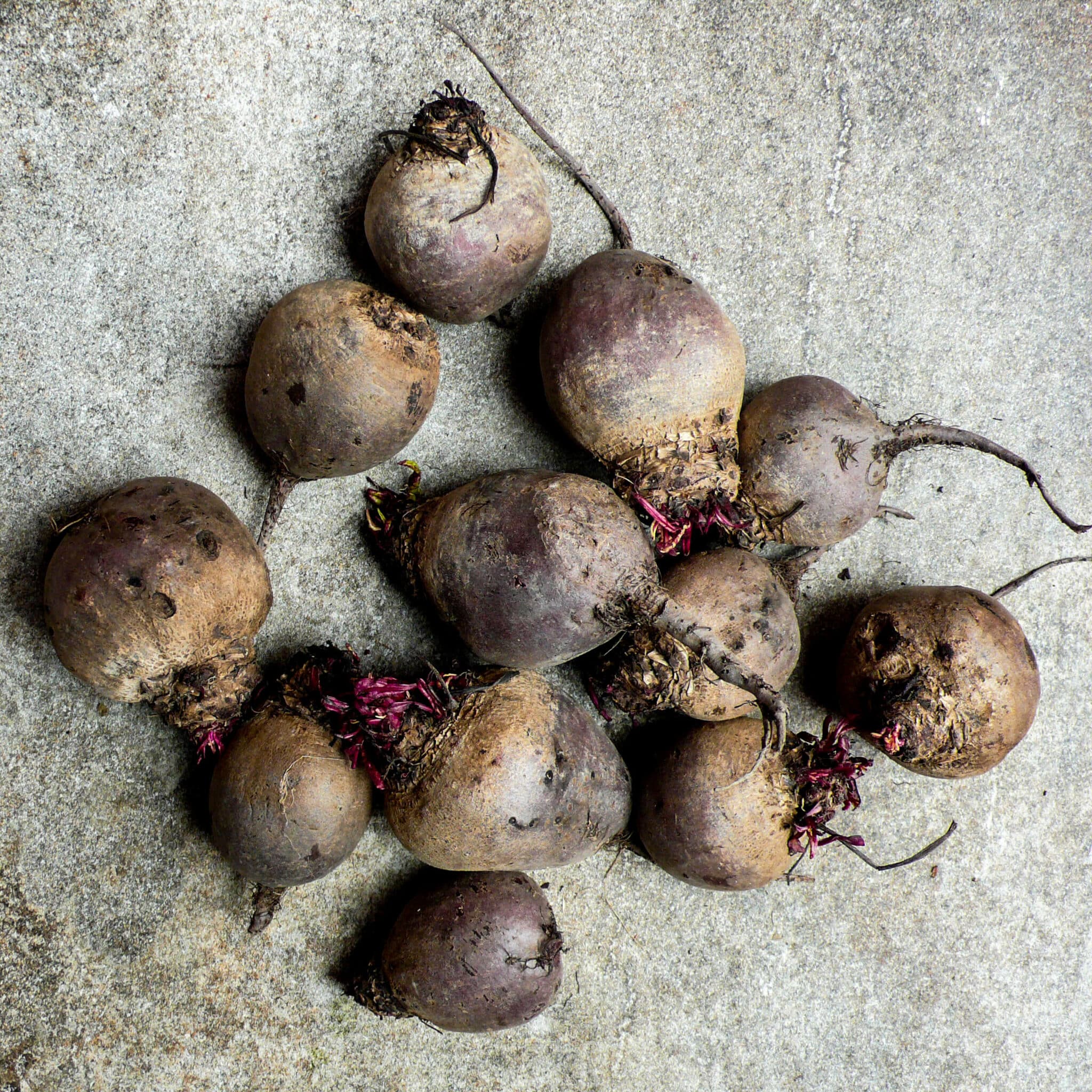
And beets are worth picking up when you see them. Not only are they beautiful, no matter the variety. They’re tasty too.
Beetroots love punchy flavours
Beetroots are among those sturdy ingredients who can take on a lot of flavour. They need flavour, lest they become too sweet, at least once cooked. That’s why you’ll often find a lot of vinegar in beetroot salads, for example.
But they can also take a lot of spices and heat. And that’s where I’m going today.
Lots of spices – herby as well as earthy. Punchy heat. Sourness. Freshness. And roasted beetroots with a flavour as deep and intense as its colour.
How to make spiced beetroot with chickpeas and harissa yoghurt
There are a few components to this dish, but it’s actually fairly simple and doesn’t take very long.
The beets are mostly left to themselves in the oven. The harissa yoghurt can be mixed in thirty seconds. And the chickpeas need only a few short minutes in the pan.
There’s not a lot of chopping, cutting or peeling either. Depending on where you live, the most challenging part may indeed be locating the necessary ingredients.
Za’atar is a spice mix made from different varieties of Middle Eastern wild thyme, sesame seeds, sumac and salt. Check the labelling – you want to avoid varieties with flour and artificial flavourings added if you can.
Sumac is the spice made from grinding dried sumac berries, a sour Middle Eastern berry. It was used to add a sour component to dishes before lemons were introduced to the region, but its aromatic characteristics has kept its popularity alive until today.
Harissa is a Tunisian chili paste which is used across Northern Africe. It has a depth of flavour few, if any, other chili pastes have. You can make your own or buy it ready made. Be aware that harissa may vary substantially both in heat levels and flavouring (different areas use different spices), so try a few different ones until you find one you like.
If you can’t get these ingredients where you live, search online to find a supplier near you. They’re all more than worthwhile having in your cupboard – I, for one, use them all the time.
I got the idea for this particular dish from BBC Good Food. I’ve made a few changes to the recipe to bring out the flavours of each individual element better. But the core of the dish is the same.
Serve this dish of spiced beetroot for lunch with some fresh bread, or for dinner with another dish or two on the side.
The recipe serves 2-4, depending on what else is on offer.
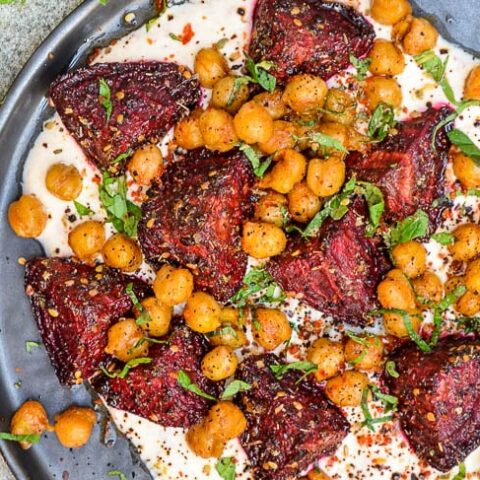
Spiced beetroot and chickpeas with harissa yoghurt
Ingredients
- 3 Tbsp olive oil, I use a mild extra virgin
- 750 g beetroot, (c. 4 medium), peeled and cut into large chunks
- 1 Tbsp za’atar, plus more to garnish
- 1 Tbsp sumac
- ½ tsp isot biber (Urfa pepper), isot biber or Aleppo pepper (pul biber)
- 10-15 mint leaves, finely sliced
- salt and pepper
Harissa yoghurt
- 400 g Greek yoghurt
- 2 Tbsp lemon juice
- 2 Tbsp harissa
Chickpeas
- 3 Tbsp olive oil
- 250 g cooked chickpeas, from 100 g/½ cup dried, soaked and cooked, or 1×400 g/14 oz tin, rinsed and drained
- 1 tsp ground cumin
- ½ tsp paprika
- salt and pepper
How I make it
- Preheat the oven to
220 °C.
- Mix the beetroots with 3 Tbsp olive oil, za’atar, sumac and some salt and pepper. Spread on a roasting tray and leave in the oven until cooked through, around 30 minutes, depending on the size of the chunks. I cut the beets in half, then I cut each half into four pieces.
- Make harissa yoghurt by mixing the yoghurt, lemon juice and harissa. Season.
- When the beetroots are nearly done, fry chickpeas in the remaining 3 Tbsp olive oil until hot and starting to colour and crisp up on the outside. Add cumin and paprika and cook for another minute. Take off the heat and season with salt and pepper if necessary (tinned chickpeas tend to be sufficiently salty already).
- Spread the harissa yoghurt on a serving plate and arrange the beetroot and chickpeas on top. Garnish with some extra za’atar, the chili flakes and mint leaves.
Source: Davidson, Allan: The Oxford Companion to Food, 2nd edition, Oxford University Press 2006


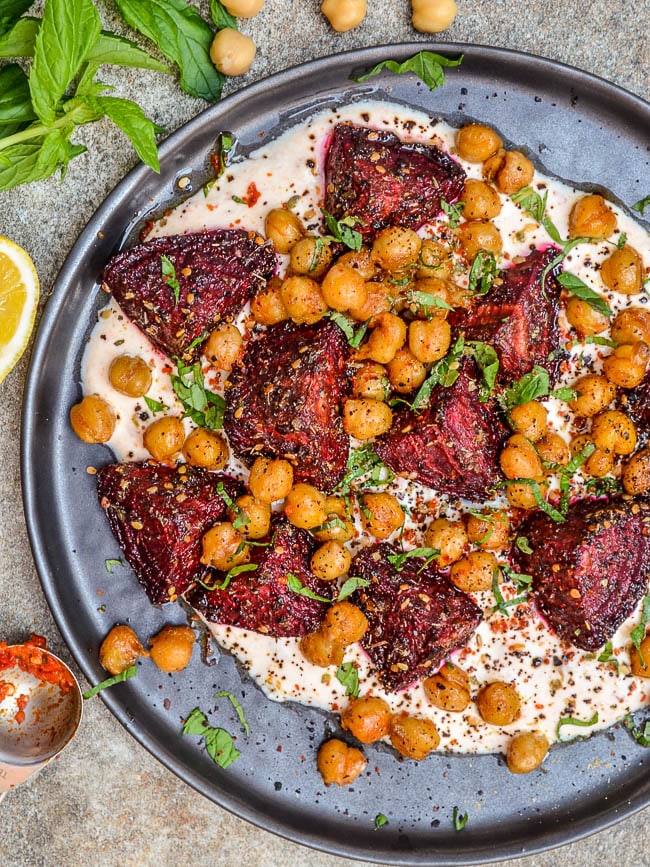


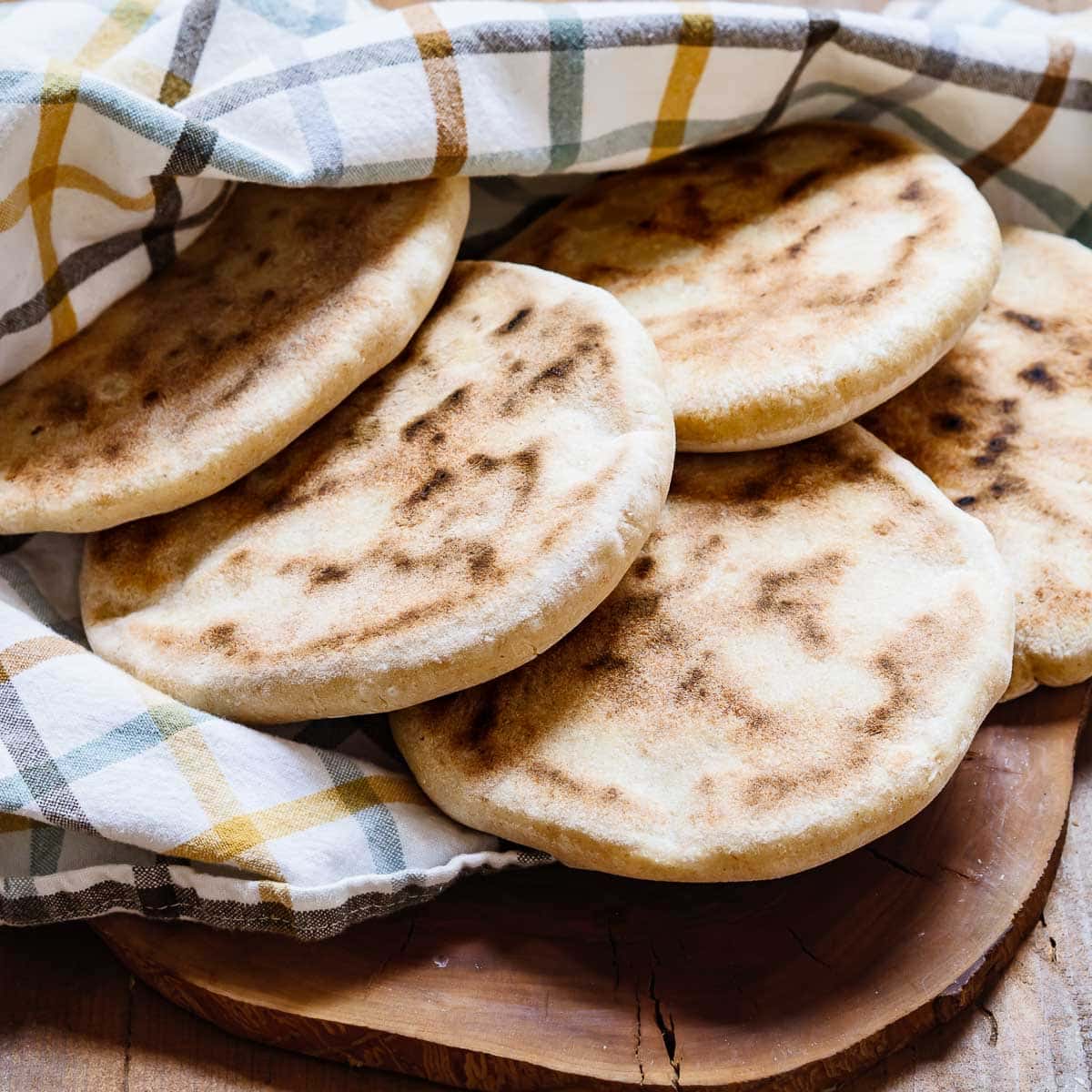

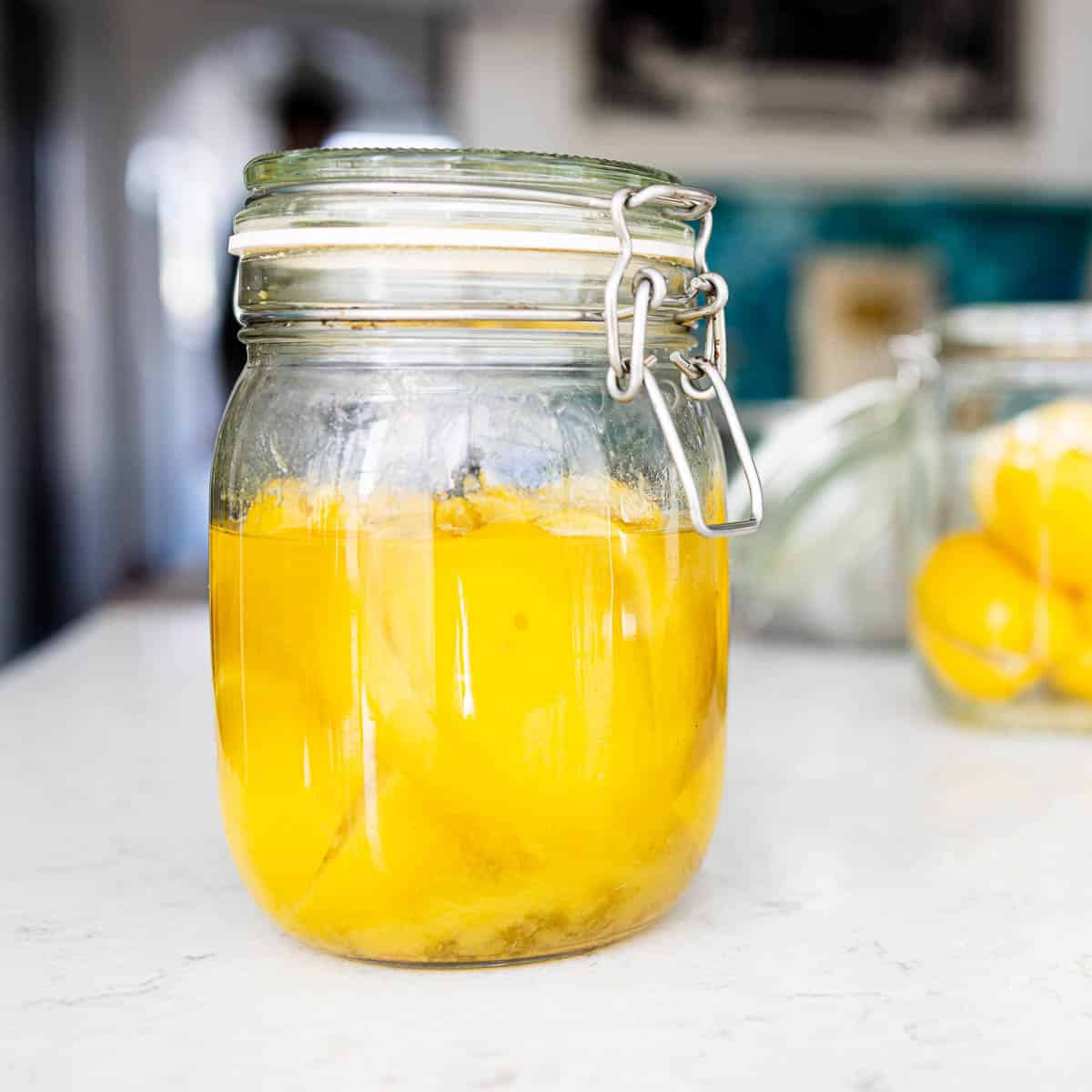
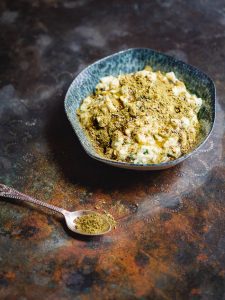
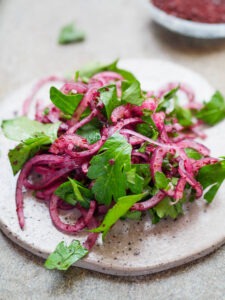
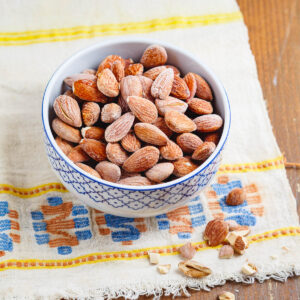




One Response
I made this tonight, and it was delicious! Being non-dairy, I found a cashew-milk plain unsweetened yogurt and it worked exactly the same as the other! I paired it with a fattoush salad, recipe also from this site. Both were delicious!